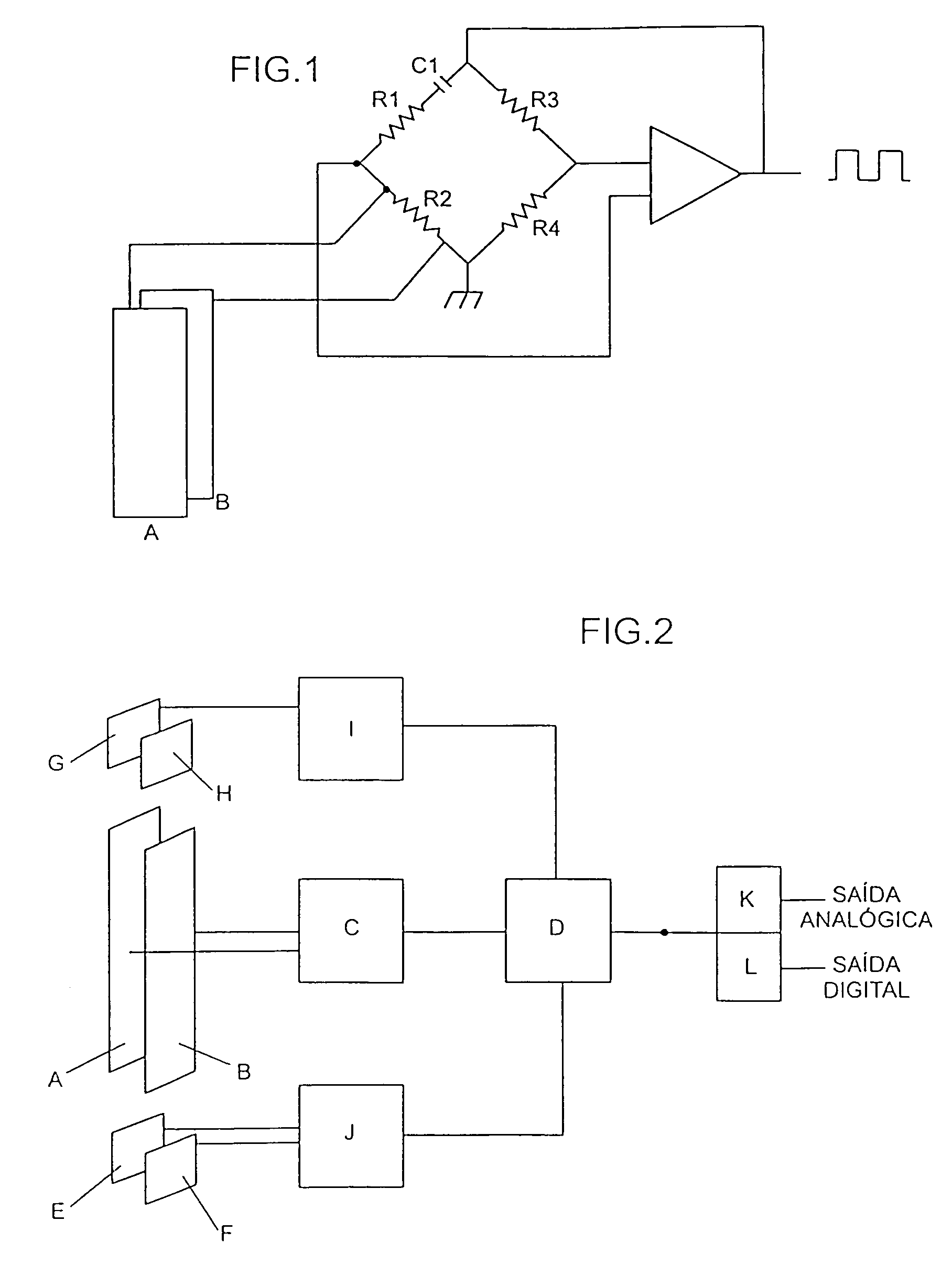Apparatus for measuring and indicating the level and/or volume of a liquid stored in a container
a technology for detecting and measuring the level of fluids, which is applied in the direction of level indicators by physical variables, liquid/fluent solid measurements, engine lubrication, etc. it can solve the problems of inconvenient measurement system, dry spell, and failure to function the buoy, so as to increase the area of the capacitor, reduce the distancing effect, and increase the precision and resolution of the measuring circui
- Summary
- Abstract
- Description
- Claims
- Application Information
AI Technical Summary
Benefits of technology
Problems solved by technology
Method used
Image
Examples
Embodiment Construction
[0068]A presently preferred specific embodiment of the present invention is illustrated as an example in the attached drawings and it will be described in details hereinafter. However it is to be understood that while the present invention is susceptible to various modifications and alterations in form and in dimension, the present specification does not intend to limit the invention to the particular forms and / or dimensions hereby described but, on the contrary, to cover all such modifications and alternative embodiments which may be considered as within the spirit and scope of the invention, as defined by the attached claims.
[0069]With particular reference now to FIG. 1, the present invention comprises two fixed metallic electrodes (A and B) positioned in the interior of the tank in such a position as to be immersed in the fuel, said electrodes being separated by a gap having a suitable, predetermined distance, therefore defining a space through which the fuel penetrates.
[0070]The...
PUM
 Login to View More
Login to View More Abstract
Description
Claims
Application Information
 Login to View More
Login to View More - R&D
- Intellectual Property
- Life Sciences
- Materials
- Tech Scout
- Unparalleled Data Quality
- Higher Quality Content
- 60% Fewer Hallucinations
Browse by: Latest US Patents, China's latest patents, Technical Efficacy Thesaurus, Application Domain, Technology Topic, Popular Technical Reports.
© 2025 PatSnap. All rights reserved.Legal|Privacy policy|Modern Slavery Act Transparency Statement|Sitemap|About US| Contact US: help@patsnap.com



